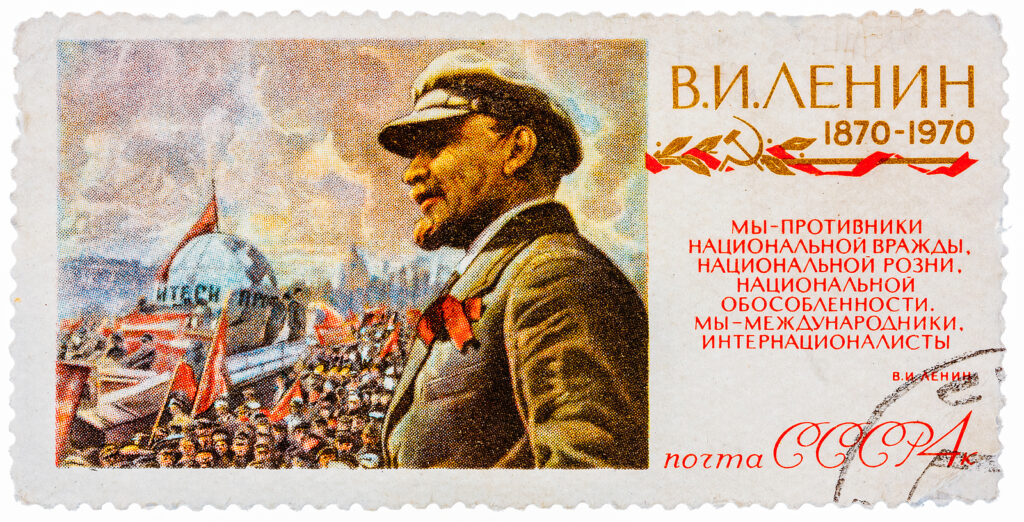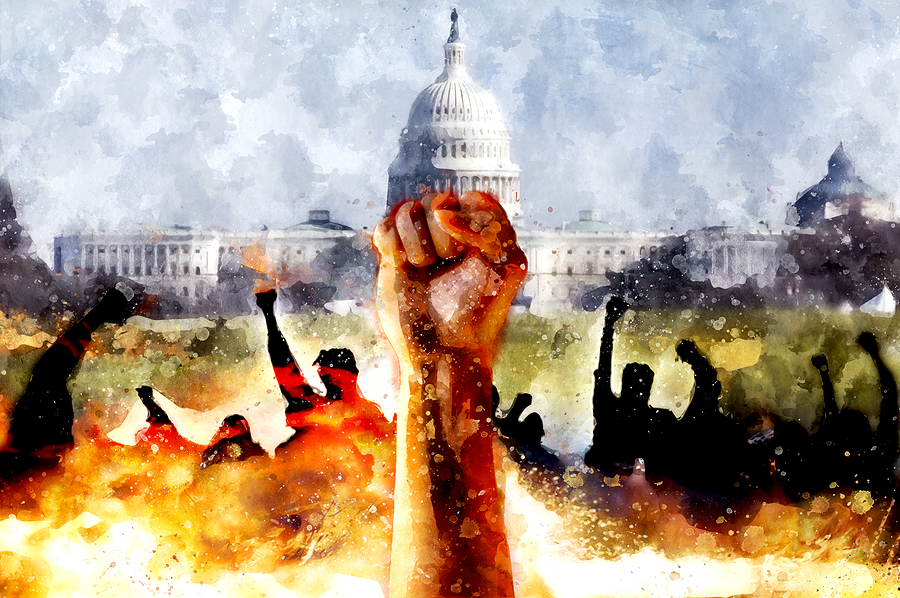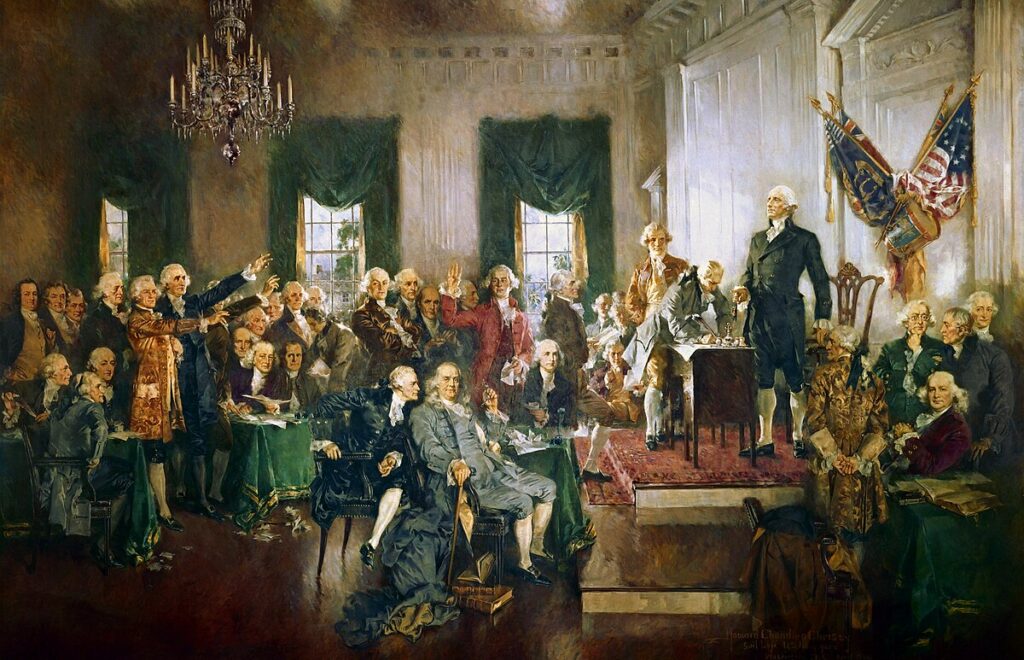As these lines are being written, the war of attrition on Israel’s northern border continues, with the threat of further escalation growing each passing day. Unprecedented numbers of Israeli forces are stationed along the border and the military rhetoric talks about “striking Hezbollah,” there is a widespread understanding that Israel must deliver a significant blow to Hezbollah in order to restore Israeli deterrence in the region and to enable the residents of the north who have been evacuated from their homes to return and live in security.
Yet when it comes to the practical question of what next steps Israel must take in order to reestablish its security in the north, our national conversation finds itself stuck in an awkward silence. This is because the very question automatically conjures up the scars of Israel’s past experiences in Lebanon and the supposed universally acknowledged lessons learnt from Israel’s many years of military presence leading up to the withdrawal in the year 2000. It is therefore vital that in our current moment, where it seems that the north could erupt into full scale war at any time, we re-examine some of these supposed ‘lessons learned’ from the IDF’s past actions in Lebanon, and be prepared for the rapidly approaching moment of decision that Israel may face again soon.
***
Myth 1: The South Lebanon Security Zone (1985–2000) was militarily ineffective
Following the First Lebanon War, Israel withdrew from Beirut and its surroundings, and the IDF, along with the South Lebanon Army (or the SLA, a mainly Christian Lebanese militia backed by Israel), repositioned itself along a 3 to 12 km wide zone inside Lebanon along Israel’s northern border, known as the “security zone.” The goal was to create a buffer zone between the Hezbollah terrorists and the residents of Northern Galilee, while continuing to fight them within Lebanon, rather than within Israel’s borders.[1]
The IDF’s presence in the zone was highly successful in preventing terrorist infiltrations into Israeli territory. However, it was less successful in preventing rocket fire from Lebanese territory north of the zone. Over these 15 years, Hezbollah fired about 4,000 rockets aimed at Israeli towns, killing seven civilians and greatly disrupting the lives of the residents of the north.[2] By the eve of the withdrawal in the year 2000, Hezbollah, with Iranian and Syrian assistance, had accumulated around 7,000 rockets, whose range covered most of Israel’s north.[3]
In response to Hezbollah’s attacks, the IDF conducted numerous small ground raids and aerial bombings, consistently targeting the terrorist group’s forces and capabilities. Two major operations were conducted in 1992 and 1996, during which Israel extensively bombarded both Hezbollah forces and Lebanese civilian infrastructure. During the 15 years of the zone’s existence, 256 IDF soldiers were killed, an average of about 17 per year.[4] However, Hezbollah’s behavior was also influenced by the nature of Israeli actions: when Israel acted decisively against Hezbollah, as in the early years, Israel enjoyed periods of relative calm. But when Israel, starting in 1992 under Rabin’s government, adopted a more accommodating policy with the aim of promoting peace initiatives with Syria and Lebanon, Hezbollah grew in confidence, and its attacks on IDF forces increased.
Throughout this entire period, there was a broad consensus among Israel’s leadership, as well as within the public, that it had no choice but to maintain a presence in Southern Lebanon in order to protect the northern region of the country. Despite the difficulties involved, the zone was perceived as a necessary price for ensuring the security of the Galilee against terrorist invasion.
Accordingly, when the idea of withdrawing from the zone emerged in the late 1990s, it was strongly opposed by the IDF, led by then-Chief of Staff Shaul Mofaz, as well as by the broader security establishment. They maintained that the zone had proven itself to be operationally effective, and therefore necessary to continue for the foreseeable future.[5] In their view, the risks of withdrawal clearly outweighed the costs of continued presence in the zone. The IDF continued its opposition to any withdrawal even after two fatal incidents in 1997: the infamous “Helicopter Disaster,” in which 73 soldiers were killed in an accidental collision of two helicopters en route to Lebanon, and the “Ansariya Ambush,” which killed 12 soldiers from the Israeli Navy’s special forces operation unit, Shayetet 13.[6]
In 1999, the IDF submitted a report arguing that if it withdrew from Lebanon without first dismantling Hezbollah, the result would be disastrous.[7] The IDF claimed that Hezbollah would take over the entire area right up to Israel’s border, thereby increasing its capability to directly threaten Israel’s north; that withdrawal would be interpreted by Israel’s enemies as a sign of Israeli weakness and would damage Israeli deterrence across the entire region; and that it would be understood as an Israeli submission to terrorism, thus encouraging Palestinian and other terrorist organizations to reign fire on Israel’s civilians.[8]
Myth 2: Withdrawal from Southern Lebanon was Politically Inevitable
In 1998, even Ehud Barak himself was still arguing that a unilateral withdrawal from Lebanon “would endanger Israel’s security, endanger the security of the residents of the north, and strengthen Hezbollah. To initiate this would demonstrate public irresponsibility.”[9] When, as Prime Minister in 2000, he eventually decided to push through a unilateral withdrawal, this constituted an abandonment of all the accumulated wisdom of Israeli strategic doctrine up to that point. The drastic decision contradicted the hitherto unchallenged strategic principle of maintaining an offensive posture and seeking to shift battlelines into enemy territory. So, what explains this radical shift in policy?
When Barak assumed the role of Prime Minister in 1999, he brought with him a vision of effecting a profound change in the regional order. Immediately upon starting his term as premier, he declared his intention to secure a peace agreement with Syria, sign a comprehensive and final agreement with the Palestinians, and to withdraw the IDF from Southern Lebanon, all within one year.[10] His original intention was to withdraw from Southern Lebanon as part of the peace agreement with Syria. However, after his attempts to offer far-reaching concessions to Syria to broker a peace deal failed to yield tangible results, he pivoted and ordered the complete and unilateral withdrawal from the security zone.
He was also eager to carry out the withdrawal as soon as possible, with the aim of completing the move before the Camp David Summit in July 2000, where he hoped to reach a permanent agreement with the Palestinians.[11] To the public, he claimed that withdrawal would improve the daily security of residents of the north, and that any attack on Israel from Lebanese territory would be met with massive retaliation.[12]
Another contributing factor to the withdrawal decision emerged in 1997 with the formation of the “Four Mothers” protest movement. This movement, driven by bereaved mothers, initiated a public campaign advocating for a full withdrawal from the security zone, emphasizing the human cost and emotional toll of Israel’s continued presence in Lebanon. While highlighting these significant concerns, the movement did not address the strategic concerns that necessitated the IDF’s control of the area. Their push for withdrawal did not offer solutions for preventing terrorist attacks against border communities or for salvaging Israeli deterrence.[13] However, the campaign did receive substantial and sympathetic coverage from major Israeli media outlets,[14] who were deeply committed to the idea that the Oslo accords would lead to “peace in our time.”
The decision to pursue a unilateral withdrawal was not inevitable, but rather the product of the initiative of Ehud Barak, acting within a worldview according to which comprehensive peace deals with Syria and Yasser Arafat were just a matter of offering the right concessions, following which a new era of peace would be ushered in. The Israeli media aided in legitimizing this questionable move by focusing heavily on the costs associated with remaining, while downplaying the costs of leaving.
Myth 3: The General Public and Even the Likud Supported a Unilateral Withdrawal
By the end of the 1990’s, voices in the Likud, including Netanyahu, supported the idea of withdrawing from Lebanon within the framework of a political agreement that would see Hezbollah disarmed. In 1998, then-Defense Minister Yitzhak Mordechai proposed an Israeli withdrawal conditioned upon on the prior disarmament of Hezbollah and ensuring security guarantees for the South Lebanon Army members. However, this proposal did not progress because Syria, which effectively controlled Lebanon at the time and whose consent was essential for any Hezbollah disarmament initiative, rejected it outright.[15]
There is an immense difference between a withdrawal within the framework of an agreement that would lead to Hezbollah’s disarmament and a unilateral withdrawal that would abandon the territory to Hezbollah and lead to its inevitable empowerment. For this reason, even the leader of the far-left Meretz party, Minister Yossi Sarid, opposed the unilateral withdrawal on the eve of its execution.[16] Ahead of the May 1999 elections which brought Ehud Barak to power, a Gallup poll found that 61% of the public opposed a withdrawal without an agreement with Lebanon and Syria, while only 31% supported a unilateral withdrawal.[17]
Another factor that contributed to the decision to withdraw was the assessment among some political leaders that Israeli society was particularly sensitive to the loss of soldiers and would therefore be unwilling to bear the costs of a war of attrition. However, this was a misreading of public sentiment, perhaps even a projection of those leaders’ own feelings onto the public. Israeli society has demonstrated great national resilience and a willingness to endure significant losses, provided that the purpose of the war was clear and the leadership was committed to a decisive victory over the enemy, even if it would take an extensive period of time.[18] This public patience and fortitude was evident in Operation Defensive Shield and the subsequent counter-terrorism activities in Judea and Samaria in the following years. A similar sentiment was also seen at the onset of the Second Lebanon War.[19] Anyone observing the public atmosphere in Israel today, amidst the threat of Hamas, can clearly see the resilience of Israeli society, and its willingness to accept losses when the goal is the pursuit of decisive victory over its enemies.
Myth 4: The Withdrawal Led to a Period of Quiet for Israel’s North
The first years following Israel’s withdrawal from Lebanon did indeed see a decrease in rocket attacks on Israel, with the exception of the areas of Mount Dov and the Shebaa Farms.[20] During this period, however, Hezbollah fortified its presence along the entire Israel-Lebanon border, constructing numerous bunkers for the purpose of executing mortar attacks. Hezbollah persisted in assaulting IDF patrols on Israel’s side of the border, to which Israel responded with targeted and restrained actions. The first significant incident occurred in October 2000, when Hezbollah killed and captured three Israeli soldiers, which eventual led Israel to release 400 prisoners in exchange for their bodies in 2004.[21]
After Barak’s assurances, Israel was expected to respond vigorously to any post-withdrawal aggression. However, the withdrawal had, as predicted, emboldened Palestinian terrorist organizations, plunging Israel into a series of deadly terror attacks, known as the Second Intifada. The turmoil of this new wave of terror pre-occupied Israel, leaving it unprepared for a rapid response and unwilling to simultaneously engage in forceful retaliation against Hezbollah.[22] After Hezbollah’s initial attack Israel’s restrained reaction set a new precedent. Its hesitant responses, coupled with its willingness to exchange terrorists for hostages, further strengthened the position of Hezbollah, who went on to attempt additional hostage-taking operations that eventually erupted into the Second Lebanon War in 2006.
Following the withdrawal, Hezbollah additionally focused on expanding its missile arsenal and extending its range. By the outbreak of the Second Lebanon War, Hezbollah had amassed approximately 16,000 rockets and Katyushas, with some capable of reaching as far as Hadera.[23] As early as 2003, high-ranking security officials were raising alarms about Hezbollah’s evolution from a tactical concern to a significant strategic threat, with the capability to unleash a barrage of rockets across the entire northern region of Israel and to target strategic Israeli infrastructure.
Myth 5: Israel’s Military Responses after the Withdrawal Received Greater International Legitimacy
Between the withdrawal and the Second Lebanon War, Israel’s security establishment came to believe that the threat of conventional armies invading Israel had all but ceased to exist, particularly after the disbanding of the Iraqi army in 2003. A new doctrine was being formed, which focused on creating a “smaller and smarter army,” focused on advanced technologies, virtual command and control systems, and a strong reliance on the Air Force and its use of precision-guided missiles, while de-emphasizing the need for a large, maneuverable ground force.[24]
As the Second Lebanon War unfolded and the political leadership determined that a substantial response was required, the favored approach was to conduct air strikes targeting civilian infrastructure in Lebanon as well as Hezbollah positions. However, these air strikes proved ineffective against the small, dispersed rocket bunkers in southern Lebanon, primarily because their locations were unknown. The concession of territorial control had also brought a significant loss in essential elements of intelligence gathering.
At the outset of the Second Lebanon War, Israel initially received considerable international support. However, this support waned as it became evident that Israel’s military efforts were mainly causing damage to Lebanese infrastructure, rather than effectively targeting Hezbollah — a goal that necessitated ground operations. In Washington, there were high expectations that Israel would critically weaken Hezbollah, a goal which aligned with the US’ broader objectives in its War on Terror. However, the approach Israel pursued led to great disappointment in Washington. Instead of a decisive ground campaign to dismantle terrorist infrastructure — similar to Operation Defensive Shield in Judea and Samaria — Israel continued to prioritize air strikes. The element of ground invasion that eventually occurred was belated, ineffective and lacked clearly defined objectives.[25]
The Second Lebanon War ended with several strategic shortcomings for Israel. The most notable was its failure to effectively neutralize Hezbollah’s rocket fire, which persisted until the ceasefire and was touted as a victory by Hezbollah. Israel also missed a vital opportunity to substantially dismantle Hezbollah’s military infrastructure in Southern Lebanon. This oversight not only weakened Israel’s military impact, but also spoiled the opportunity to bolster its reputation as a vital security ally of the United States. As the conflict progressed, international support dwindled, creating a new status quo, in which any future Israeli actions would come at a substantial diplomatic cost. Israel’s withdrawal, rather than granting it greater international legitimacy to respond to attacks, instead resulted in raising the diplomatic price of future military action in that same territory.
Myth 6: International Institutions are Key to Any Effective Solution
According to the UN Charter, decisions made by the Security Council are binding. However, in practice, these decisions are only implemented in circumstances where there are state actors who are willing to enforce them. Already in 1978, the Security Council decided (per Resolution 425) that Israel must make a full withdrawal from Lebanon, and that the UNIFIL force should assume security responsibility in the border area. This meant that for the entire 15 years of the security zone, Israel acted contrary to the Security Council’s decision.[26] Israel’s justification, it argued, was that in the absence of a peace agreement with Lebanon and in light of the threat to its territory, its military presence there was necessary, as UNIFIL was incapable of fulfilling its mission.[27]
In 2004, the Security Council also decided (Resolution 1559) that all militias in Lebanon must be disarmed.[28] This decision has not been implemented to this day, because it requires the Lebanese government to disband Hezbollah, which it does not have the power to do. In 2006, at the end of the Second Lebanon War, Security Council Resolution 1701 called for an immediate ceasefire, reiterating the call to disarm all militias, again planning to ensure peace through the deployment of UNIFIL forces south of the Litani River. This time, Israel decided to rely on the UNIFIL forces, who are supposed to prevent Hezbollah from accumulating weapons. In practice, the UNIFIL force has failed miserably in its mission, being itself under threat by Hezbollah not to act and thereby turning a blind eye to arms smuggling.[29] Foreign soldiers, it turns out, are not willing to risk their lives for the sake of Israel’s security — nor for the sake of the implementation of Security Council resolutions.
Myth 7: Every Threat Has a Diplomatic Solution
Will we forever “live by our sword?” Unfortunately, it seems that the answer is yes. We must abandon the ill-conceived dream that we are on the precipice of a fundamental change in reality, or that concessions will diminish our enemies’ desire to destroy us. It is precisely our willingness to accept the truth of the matter that will bring about improved security, put our enemies on defense, and allow for a thriving and prosperous national existence.
Since the Second Lebanon War, Hezbollah has refrained from actions that would inevitably trigger a full-scale escalation, but this relative calm is misleading. Iran and Hezbollah share the ultimate objective of dismantling the State of Israel, and are gearing up for a direct confrontation. In 2006, Hezbollah possessed 16,000 rockets, with their farthest range reaching Hadera; in 2023, they have a stockpile of 150,000 missiles and rockets, with tens of thousands capable of striking central Israel. Their arsenal has expanded to include attack drones, advanced anti-aircraft and anti-ship missiles, and a commando unit equipped to conquer areas in the Galilee.[30] In the broader context, the past two decades have been utilized by Iran to create a land corridor under its dominance, extending from Iraq and Syria to Lebanon and the Mediterranean.
***
Prior to the withdrawal from Lebanon, the public debate surrounding withdrawal centered on the price of maintaining our presence there. Today, it’s crucial to acknowledge the price of our absence from this territory. In the aftermath of the Six-Day War, it became clear that our northeastern border remained indefensible as long as the Golan Heights were under Syrian control. Similarly, we must now recognize that our northern border remains fully indefensible so long as whoever controls Southern Lebanon harbors hostility towards Israel. From a geographic standpoint, the Litani River represents the only logical boundary between Israel and Lebanon, not the arbitrary line that was set in the middle of a mountain range by the Sykes-Picot Agreement in 1916.
Looking back, it’s clear that when Israel was active in Lebanon, Hezbollah posed only a tactical threat, primarily affecting the immediate northern Galilee; whereas following Israel’s withdrawal, Hezbollah has evolved into a strategic threat to the entire State of Israel. This has allowed it to function as a tool of deterrence for Iran, thereby raising the price of any potential Israeli actions against Iran’s nuclear capabilities or its regional military presence.
In 2000 we left the security buffer zone in Lebanon’s territory; in 2023 we have effectively created a security buffer zone within Israeli territory, having evacuated some 60,000 Israelis from their homes along the border because we couldn’t guarantee their safety there. This war must not end without Israel fully dismantling the threat from Hezbollah. A range of strategic options must be considered, beginning with the offer of a diplomatic solution by insisting on the implementation of UNSC 1701 — meaning Hezbollah’s disbandment — through air operations, and potentially a ground occupation of Southern Lebanon. A complete analysis of the long-term alternatives is beyond the scope of this article, but what should be clear is that after dealing with the immediate threat from Hezbollah, decision-makers must not dismiss the possibility that Israel may need to control territory in Southern Lebanon for the foreseeable future in order to prevent its re-emergence as a threat to Israel. From our experiences with withdrawals in Gaza and Lebanon, one lesson stands out: shying away from conflict by pursuing territorial withdrawal inevitably results in the emergence of greater and more severe threats.
Dr. Raphael BenLevi is director of the Churchill Program for National Security of Tikvah-Fund Israel, a fellow at The Misgav Institute for National Security and Zionist Strategy in Jerusalem, and a Maj. (res.) in the IDF Intelligence Branch. He is author of the book: Cultures of Counterproliferation: The Making of American and Israeli policy on the Iranian Nuclear Program (Routledge, 2023). The opinions expressed in this article are those of the author.
Photo Source: Homeros BigStock
[1] The IDF History Department, “The Full Survey of the Operations in the Security Zone,” Retrieved 7.12.2023. https://tinyurl.com/444psysj; Dov Ben-Meir, The Israeli Defense Establishment: History, Structure, Policy, [Hebrew] (Tel-Aviv: Yedioth Ahronoth, 2009), p. 227; Charles D. Freilich, Zion’s dilemmas: how Israel makes national security policy. (Cornell University Press, 2017), p. 142. For an informative reassessment on the First Lebanon War itself, see: Dan Naor and Eyal Lewin, “Was the 1982 Lebanon War a Deviation from Israeli Security Doctrine?” The Journal of the Middle East and Africa (2023): 1-26.
[2] Freilich, Zion’s dilemmas, p. 142.
[3] Ibid, p. 201.
[4] Ibid, p. 142.
[5] Dalia Dassa Kaye, “The Israeli decision to withdraw from Southern Lebanon: Political leadership and security policy”, Political Science Quarterly 117: 4 (2002), p. 567
[6] Freilich, Zion’s dilemmas, p. 150.
[7] Dassa Kaye, “The Israeli decision”, p. 568.
[8] Ibid, 569.
[9] Freilich, Zion’s dilemmas, p. 141 .
[10] Ehud Barak, My Country, My Life: Fighting for Israel, Searching for Peace, (New York: St. Martin’s Press, 2018), p. 328; Raphael BenLevi, Cultures of Counterproliferation: The Making of US and Israeli Policy on Iran’s Nuclear Program, (London, UK: Routledge, 2023), p. 118.
[11] Freilich, Zion’s dilemmas, p. 146.
[12] Dassa Kaye, “The Israeli decision”, p. 581.
[13] Ibid, 571.
[14] Ibid.
[15] Freilich, Zion’s dilemmas, p. 149; Dassa Kaye, “The Israeli decision”, p. 578.
[16] Barak, My Country, p. 345.
[17] Dassa Kaye, “The Israeli decision”, p. 571.
[18] Pnina Shuker, “The Sensitivity of Israeli Society to Losses and its Influence on Military Decision Making,” [Hebrew] The Jerusalem Institute to Strategy and Security, 4.2.2.2022. https://tinyurl.com/bddv8dsx.
[19] Efraim Inbar, Israel’s national security: issues and challenges since the Yom Kippur War, (London, UK: Routledge, 2007), p. 228; Shuker, “Sensitivity of Israeli Society.”
[20] Ben-Meir, “The Defense Establishment,” p. 232.
[21] Ibid, p. 233.
[22] Freilich, Zion’s dilemmas, p. 200.
[23] Ben-Meir, “The Defense Establishment,” p. 241.
[24] Inbar, Israel’s national security, p. 225, 227.
[25] Ibid, 227; Ben-Meir, “The Defense Establishment,” p. 231.
[26] Dassa Kaye, “The Israeli decision”, p. 564.
[27] Ibid.
[28] UNSCR, “Resolution 1559: The Situation in the Middle East,” 2.9.2004 http://unscr.com/en/resolutions/1559
[29] Noa Landau, AP, Reuters, “Under Israeli and American Pressure, the UN reduces UNIFIL Forces and Raises Oversight,” [Hebrew], Haaretz, 29.08.2020. https://tinyurl.com/yc5vzfsy
[30] Oded Yaron, “150 Thousand Missiles and Rockets: Until Where Does Hezbollah Deadly Arsenal Reach” [Hebrew], Haaretz, 20.10.2023. https://tinyurl.com/ycx5xsxb








